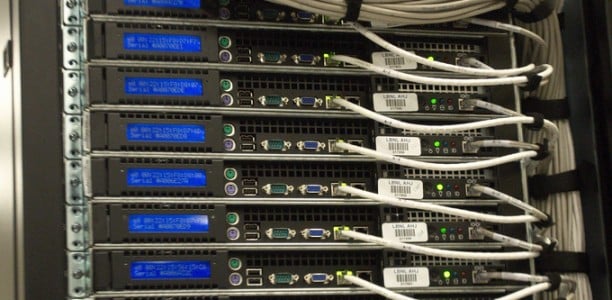
Why You Shouldn’t Take Place In The Race To Zero
November 11, 2014
How To Protect Yourself From Microsoft’s Schannel Security Vulnerability
November 13, 2014The International Data Corporation has decided to give us what they were born to give us: some data.
They predict that the total amount of data centers throughout the whole entire Earth will reach it’s nadir at 8.6 million in 2017. After that, they’ll destroy these centers slowly like the Republic to the Galactic Empire. Well, maybe not that drastic, but you’ll be seeing less of them in the future decades of your life (unless you age like Matthew McConaughey in Interstellar—in which case have fun with that Mindf%&*).

*insert joke about idolizing his future self here*
Why is this a big deal you may be asking? Wouldn’t more data centers be a good thing you may also be wondering? Why are we the lucky generations to relish in the glory that is the McConaissance the majority of you are (probably) asking?
Well let’s knock a few of those questions (minus the rhetorical MConaissance question, of course) out of the park and take you on a ride through the future of the data center.
The big news comes from Cisco’s Cloud Index which predicts that more than three-fourths of data center workloads will operate in cloud data centers. This takes us back to another blog post of ours that petitions against the cloud “Race To Zero,” which will most likely be the largest component of that three-fourths workload.
But, while the sheer number of data centers will decrease, the floor-space and on-site data-center-like rooms will grow larger. There’s just too much data for it not to.
What’s The Reason For The Decline of Data Centers?
The IDC blames the shift on the role of the corporate data center. Damn corporations! In the past, data centers were used to support business operations, but nowadays they’re being used to test new business models and influence meaningful relationships with consumers to better improve product.

With a shift in how they operate, there needs to be a shift in how they’re built and maintained, right? Right? Sure—they now need to be more flexible, scale-able, and basically not maintainable on-premise. Which is why most corporations will look to data centers causing the peak in 2017 the IDC was talking about.
But don’t take my McConaughey loving word for it, take VP of data center and cloud research at the IDC, Richard Villars word:
“Over the next five years, a majority of organizations will stop managing their own infrastructure. They will make greater use of on-premise and hosted managed services for their existing IT assets, and turn to dedicated and shared cloud offerings in service provider data centers for new services. This will result in the consolidation and retirement of some existing internal data centers, particularly at the low end. At the same time, service providers will continue their race to build, remodel, and acquire data centers to meet the growing demand for capacity.”
Man that guy’s long-winded. But smart (hopefully).
All of what Mr. Villars was saying relates to the ‘mega data centers’ which are being built by tech giants like Amazon and Microsoft. The IDC says that by 2018, data centers like that—in terms of space—will account for 72.6 percent of all data center projects. Wow.
But Is The Decreasing Number of Data Centers a Good Thing?
This all depends on who you ask. For corporations, it’s a great thing. For the owners of those data centers, it’s obviously a bad thing.
For the majority of people out there (i.e. the consumer) it can be great for the cost of hosting data, but at the same time there could be some security risks involved. Just be wary.
Overall, I don’t expect the decline to have any major impact on the data market. Heck, by 2018 there will probably be some new technology that will change the scope of data in an even larger way. Who knows. What I do know is that Cloud services and hokey business practices are nothing compared to a good dedicated server by your side.
(H/T datacenterdynamics.com)

